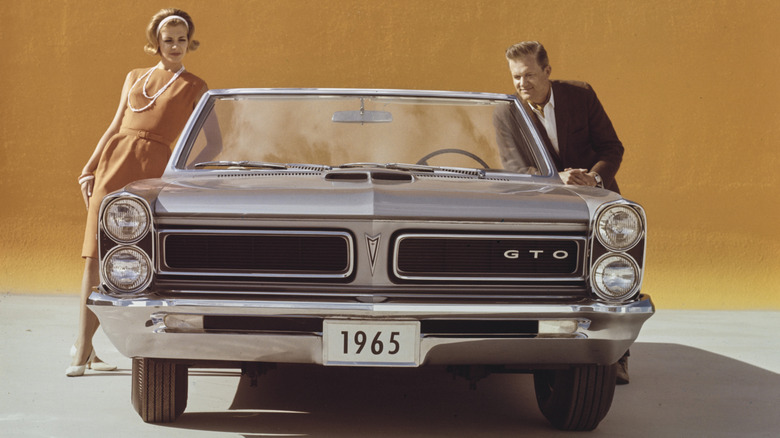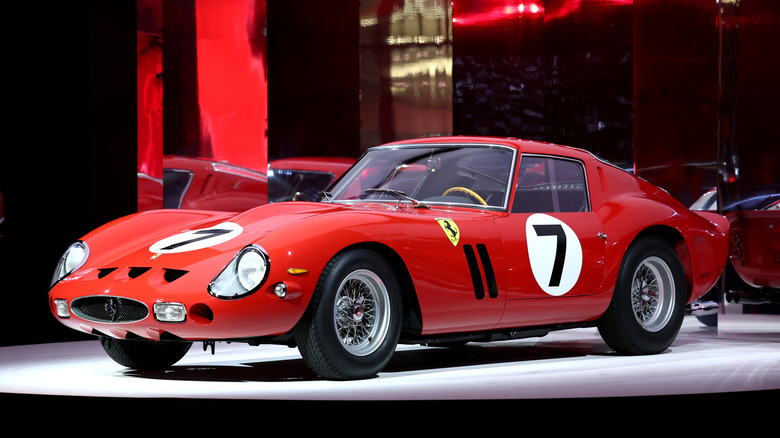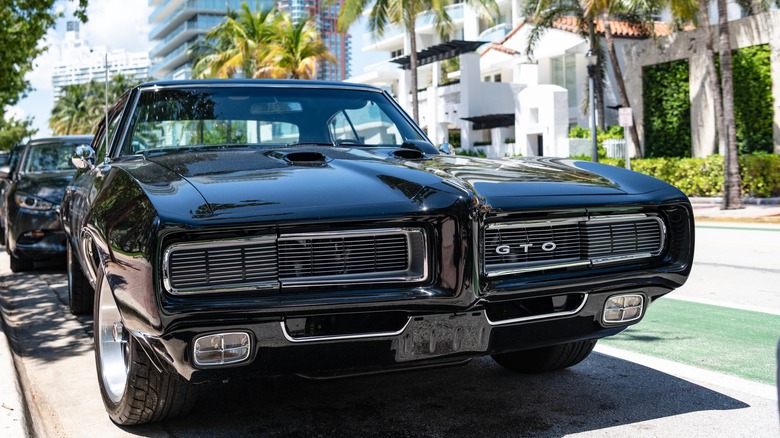What Does The GTO On Pontiac's Classic Muscle Car Stand For?
In 1964, a legend was born when Pontiac dropped one of the 389 cubic-inch V8s from its full-size lineup into a lighter, mid-sized Pontiac Tempest. Its birth kicked off a tire-smoking, youth-driven craze that took the American automotive industry by storm until the early '70s, making the 1964 Pontiac GTO a legendary part of muscle car history.
While the Pontiac GTO was a groundbreaking machine, its name was actually borrowed from another brand — the Italian one with the prancing horse on its logo. That's right, the Pontiac GTO's name was directly inspired by (or perhaps even stolen from) the Ferrari 250 GTO of the early '60s. What do those three letters stand for? In the case of both the Ferrari and the Pontiac, GTO represents the Italian words Gran Turismo Omologato, or Grand Touring Homologated in English.
What does Grand Touring Homologated mean? Though the "GT" designation has always had a very loose definition, in the Ferrari GTO's case, Grand Touring was a category of production-based auto racing (which the Ferrari GTO dominated). Homologation was the process of certifying a race car to meet the minimum requirements and production numbers to qualify as a road-going model.
A tale of two GTOs
Rare and expensive when new – and worth a record-breaking amount of money today, the Ferrari 250 GTO could be considered an early example of the many memorable homologation special cars that the world's automakers would create in the decades that followed. Though nobody would legitimately confuse the pedigree (or price) of the exotic, race-bred Ferrari and the mass-produced Pontiac, the GTO branding turned out to be a big win on what was already a hot new product.
In a now-infamous article from March 1964, Car & Driver favorably compared a brand-new Pontiac GTO in a number of performance categories against its high-priced Italian namesake. Of course, it was later revealed that the Pontiac used for the particular test was a specially prepared ringer equipped with larger 421-cubic-inch engine, but the street cred was already served.
In a slightly ironic touch, though the Pontiac GTO is considered the All-American performance machine that kicked off Detroit's muscle car boom, the Ferrari-inspired name was not the only European influence in the GTO's branding. On the Pontiac's fender badge, the GTO name was paired with a more sophisticated, Euro-inspired "6.5 Litre" script, rather than the more familiar American cubic-inch branding.
The GTO possesses a legacy of performance
The Pontiac GTO's original production run would last until 1974, with one last GTO generation brought to the market in the mid 2000s. After the original 250 GTO, Ferrari brought the GTO name back on the 1984 288 GTO and again on the 2010 599 GTO. Both GTOs have gone on to become iconic names in automotive history, the Pontiac as a blue-collar, muscle-car hero and the Ferrari as one of the world's most sought-after collector cars.
In addition to Ferrari and Pontiac, Japan's Mitsubishi also used the GTO name in the early '70s (with the same meaning) on its enthusiast-oriented Colt Galant GTO. The Mitsubishi GTO came back even stronger in the early 1990s when the name was attached to the company's high-tech new performance coupe, which was available with a twin-turbocharged V6 and all-wheel-drive.
However, when it came time to start importing this new sports car into North America, Mitsubishi changed the name. Not wanting to risk possible legal issues or cause controversy among both fans for using such an established brand name, the Mitsubishi GTO was instead sold in America as the 3000GT.


